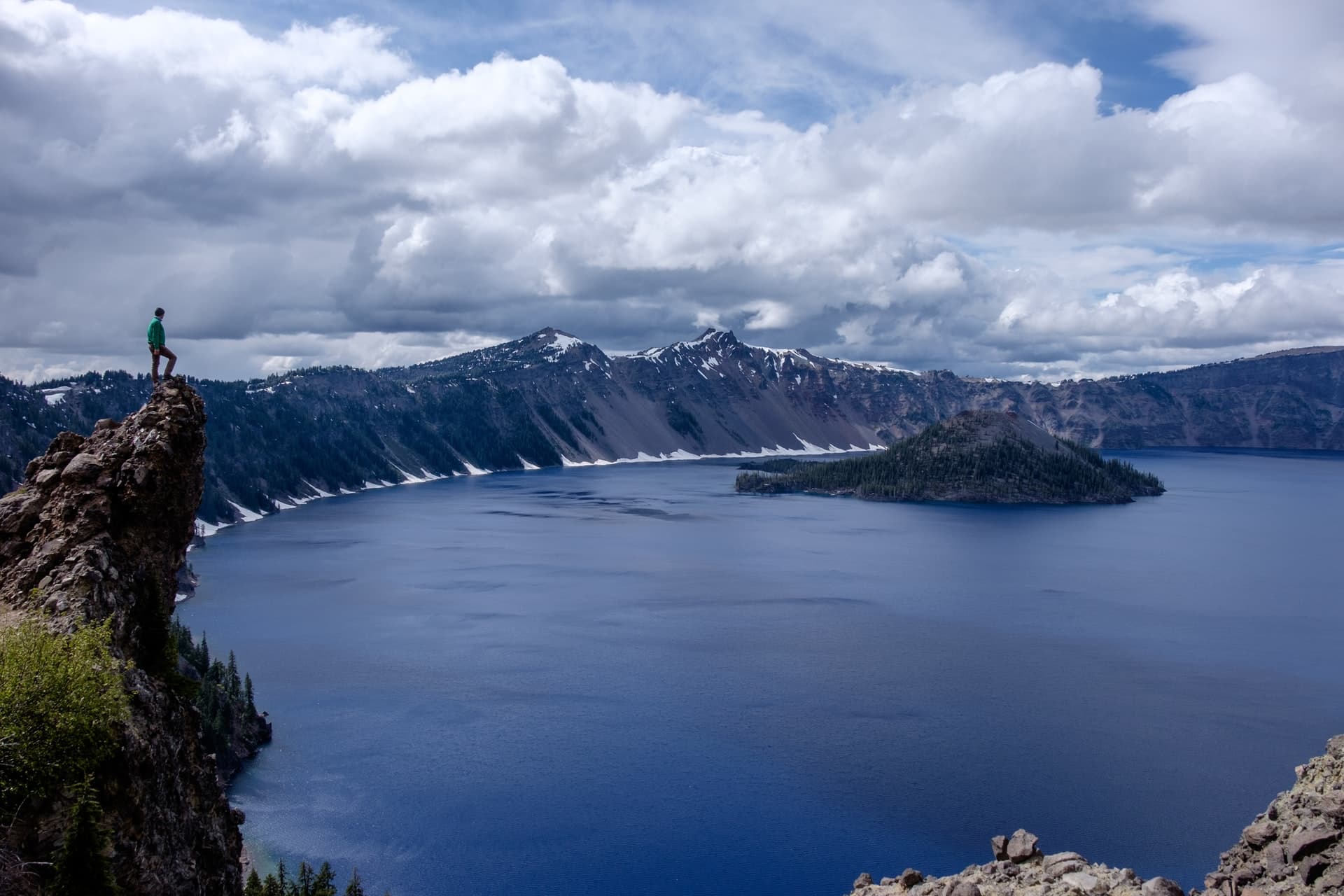
On the afternoon of Friday, August 7th, Crater Lake National Park staff received a report of multiple visitors in the caldera somewhere between Rim Village and Discovery Point. Law enforcement staff responded quickly to attempt to locate them.
Park rescue staff rappelled over the edge of the caldera to look for the individuals and provide technical rescue assistance if needed. Jackson County Search and Rescue were deployed and on their way to the park. Lake research staff was called in and headed to the lake to launch one of the park boats for a possible rescue from the lake shore.
The individuals were eventually spotted near the shoreline below Rim Village. Reports indicated that there were six people involved. Eventually, a total of seven visitors climbed out of the caldera on their own and were cited for illegal entry and creating a hazardous condition. Fortunately, no one was injured in the process.
The Cleetwood Trail is the only safe and legal way to access the shore of Crater Lake. Climbing in the caldera at any other location is strictly prohibited. The slopes are very unstable, and through the years, visitors have been seriously injured or even killed by illegally entering the caldera. The necessary major rescue efforts that result put park staff at risk. When visiting the park, please always stay behind the rock walls and never enter the caldera except on the Cleetwood Trail.
The National Park Service conducts thousands of search and rescues service-wide each year, many of which could be avoided with visitors planning and making responsible decisions. During the ongoing health crisis, it’s critical that everyone make wise choices to keep our national park rangers and first responders out of harm’s way. We ask that all visitors please Recreate Responsibly to safely spend time outside.
Crater Lake National Park is an American national park located in southern Oregon. Established in 1902, Crater Lake is the fifth-oldest national park in the United States and the only national park in Oregon. The park encompasses the caldera of Crater Lake, a remnant of a destroyed volcano, Mount Mazama, and the surrounding hills and forests.
The lake is 1,949 feet (594 m) deep at its deepest point, which makes it the deepest lake in the United States, the second-deepest in North America, and the ninth deepest in the world. Crater Lake is often referred to as the seventh-deepest lake in the world, but this former listing excludes the approximately 3,000-foot (910 m) depth of subglacial Lake Vostok in Antarctica, which resides under nearly 13,000 feet (4,000 m) of ice, and the recent report of a 2,740-foot (840 m) maximum depth for Lake O’Higgins/San Martin, located on the border of Chile and Argentina. However, when comparing its average depth of 1,148 feet (350 m) to the average depth of other deep lakes, Crater Lake becomes the deepest in the Western Hemisphere and the third deepest in the world. The impressive average depth of this volcanic lake is due to the nearly symmetrical 4,000-foot-deep (1,200 m) caldera formed 7,700 years ago during the violent climactic eruptions and subsequent collapse of Mount Mazama and the relatively moist climate that is typical of the crest of the Cascade Range.
